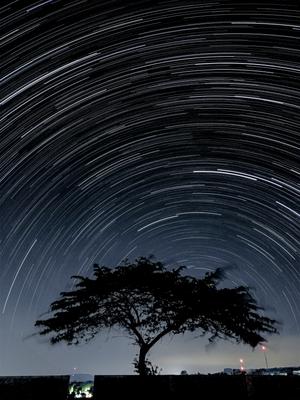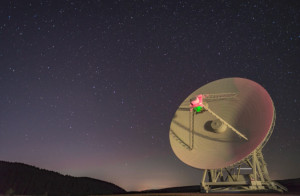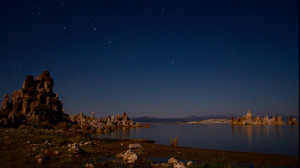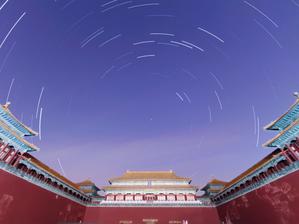Glossarbegriffe: Himmelspol
Description: Die Himmelsnord- und -südpole entsprechen den Punkten, an denen sich die Himmelskugel mit der Rotationsachse der Erde schneidet. Steht ein Beobachter am Nordpol der Erde und blickt nach oben, befindet sich der Himmelsnordpol direkt über dem Beobachter. Der Himmelssüdpol befindet sich direkt über dem Südpol der Erde. Auf der nördlichen Hemisphäre scheint sich der Himmel um den Himmelsnordpol zu drehen; auf der südlichen Hemisphäre scheint sich der Himmel um den Himmelssüdpol zu drehen. Das liegt an der Erdrotation. Dem Himmelsnordpol entspricht eine Deklination von +90 Grad. Der Himmelssüdpol hat eine Deklination von -90 Grad.
Zugehörige Glossarbegriffe:
See this term in other languages
Term and definition status: The original definition of this term in English have been approved by a research astronomer and a teacher The translation of this term and its definition is still awaiting approval
The OAE Multilingual Glossary is a project of the IAU Office of Astronomy for Education (OAE) in collaboration with the IAU Office of Astronomy Outreach (OAO). The terms and definitions were chosen, written and reviewed by a collective effort from the OAE, the OAE Centers and Nodes, the OAE National Astronomy Education Coordinators (NAECs) and other volunteers. You can find a full list of credits here. All glossary terms and their definitions are released under a Creative Commons CC BY-4.0 license and should be credited to "IAU OAE".
Zugehörige Medien
Big Dipper and Comet Neowise C2020 F3
Bildnachweis: Giorgia Hofer/IAU OAE (CC BY 4.0)
License: CC-BY-4.0 Creative Commons Namensnennung 4.0 International (CC BY 4.0) icons
Star Trail in the Southern Hemisphere with Bortle 4 Scale Light Pollution
Bildnachweis: Slamat Riyadi/IAU OAE (CC BY 4.0)
License: CC-BY-4.0 Creative Commons Namensnennung 4.0 International (CC BY 4.0) icons
Southern Sky Over La Silla
Bildnachweis: José Rodrigues/IAU OAE (CC BY 4.0)
License: CC-BY-4.0 Creative Commons Namensnennung 4.0 International (CC BY 4.0) icons
Beautiful Night in the Atacama Desert
Bildnachweis: Uwe Reichert/IAU OAE (CC BY 4.0)
License: CC-BY-4.0 Creative Commons Namensnennung 4.0 International (CC BY 4.0) icons
The Big Dipper with the Sardinia Radio Telescope SRT
Bildnachweis: Antonio Finazzi/IAU OAE (CC BY 4.0)
License: CC-BY-4.0 Creative Commons Namensnennung 4.0 International (CC BY 4.0) icons
Big Dipper Over the Mono Lake
Bildnachweis: Fabrizio Melandri/IAU OAE (CC BY 4.0)
License: CC-BY-4.0 Creative Commons Namensnennung 4.0 International (CC BY 4.0) icons
The Rotating Planet
Bildnachweis: Jianfeng Dai/IAU OAE (CC BY 4.0)
License: CC-BY-4.0 Creative Commons Namensnennung 4.0 International (CC BY 4.0) icons
Strichspuren der Verbotenen Stadt
Bildnachweis: Stephanie Ziyi Ye/IAU OAE (CC BY 4.0)
License: CC-BY-4.0 Creative Commons Namensnennung 4.0 International (CC BY 4.0) icons
















